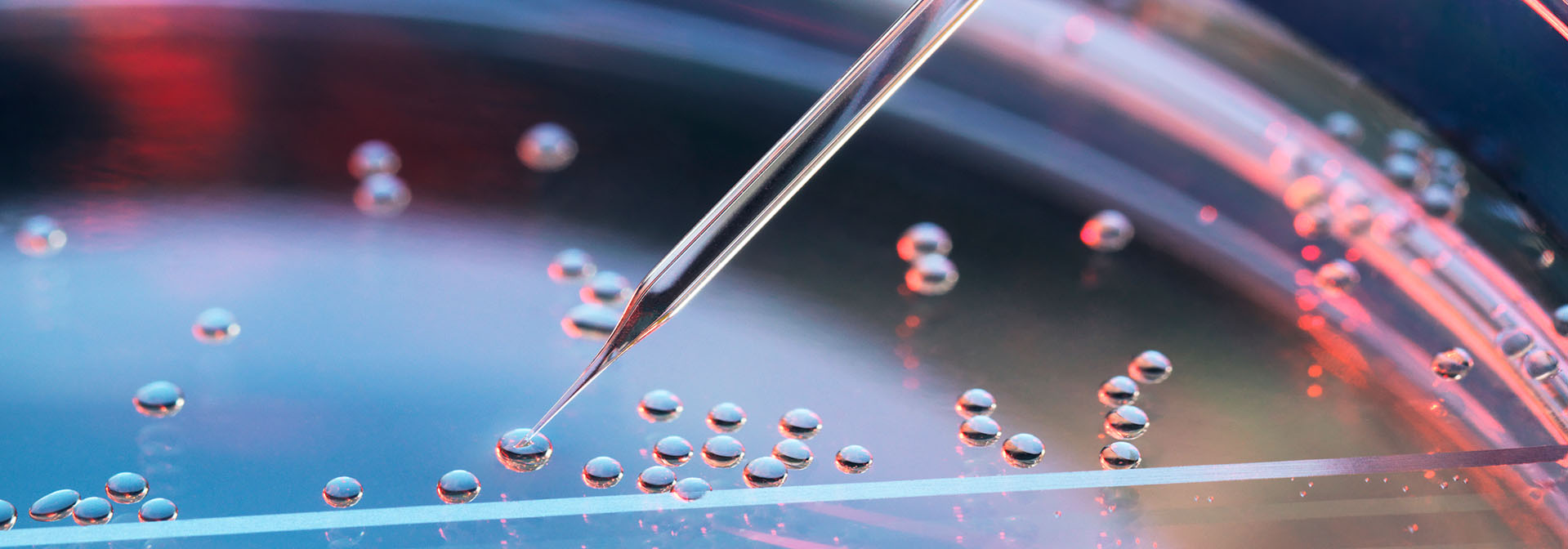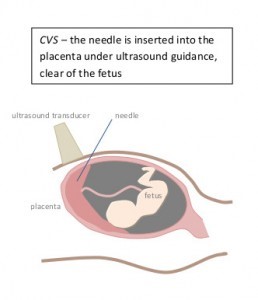What is Chorionic Villous Sampling (CVS)?
Chorionic Villous Sampling is a procedure that collects a small sample of placental tissue. The cells of the placenta have the same genetic material as the fetus and can therefore be tested for genetic and chromosome conditions.
Who is offered CVS?
If you are at an increased chance of a chromosome/genetic condition in your pregnancy, you may be offered testing by CVS. Reasons you may be offered this testing include:
- Increased chance screening results on NIPT or first/second trimester screening
- Increased nuchal translucency or other ultrasound findings
- Family history of a chromosomal or genetic condition
- Individuals/couples are known carriers of a genetic condition
- Advanced maternal age (maternal age above 37)
How is the test performed?
The test is performed at the ultrasound clinic by an Obstetrician Gynaecologist Sonologist (specialist ultrasound doctor).
The skin of the lower abdominal wall is cleansed with an antiseptic alcohol based solution. The skin and underlying tissues are injected with local anaesthetic. With ultrasound control, a fine needle is then guided into the placenta and a biopsy of placental tissue (chorionic villi) is taken.
The needle is well distanced from the baby and does not touch the baby. The biopsy is taken from outside of the pregnancy sac.
When is the test performed?
Ideally, the test is performed between 11 weeks 4 days and 13 weeks 5 days gestation.
What preparation do I need before the test?
You will need to bring:
- Referral from your doctor
- Reports for the pregnancy that were performed elsewhere
- Your blood group card
A moderate amount of fluid in the bladder is preferable. This can help make the uterus more accessible for the needle test. If you are on any medications and in particular, blood thinners such as Aspirin or Clexane, please let us know ahead of time as you may need to cease these prior to the procedure.
How is the placental tissue analysed?
The specimen is sent to a laboratory to be processed.
The type of testing performed by the laboratory will depend on the indication for the test. Our genetic counsellors will discuss this further with you.
What should I do after the test?
It is advisable for someone to take you home after the test and that you rest for the remainder of the day. This does not mean you should confine yourself to bed but rather you should just rest at home and avoid any strenuous activity including lifting any heavy weights.
Most patients experience a short duration of mild crampy period-like pains. This is most likely to occur after the local anaesthetic wears off, i.e., within the first half hour after the test. You may wish to take paracetamol or panadol.
It is not unusual for some patients to experience slight vaginal blood spotting after the test.
If the pains worsens or spotting progresses to fresh red bleeding, then contact your doctor.
What are the risks of the test?
There is a 1 in 500 (0.2%) risk of miscarriage with the test. This is usually related to infection introduced at the time of the procedure. Antiseptic precautions are taken to minimise this risk.
Warning signs of miscarriage include strong regular period-like pains with fresh red bleeding. The time when miscarriage is most likely to occur is the first 24-48 hours after the test. Contact your doctor should this occur.






